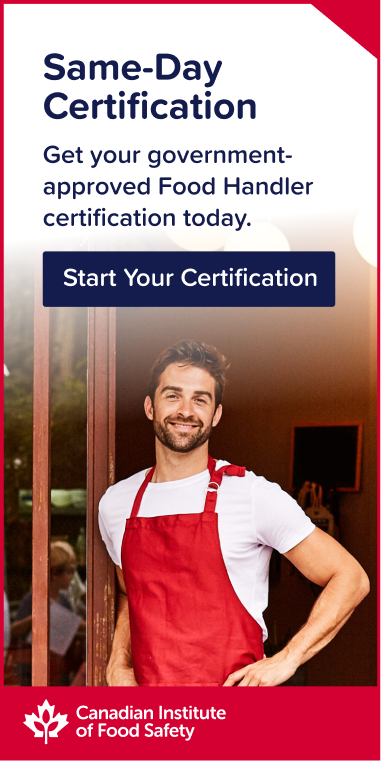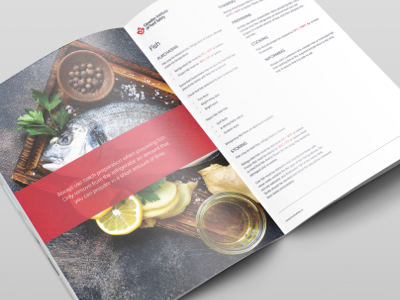
Food labelling regulations in Canada are evolving, and businesses need to keep up to ensure compliance. The Food Labelling Modernization (FLM) initiative, overseen by the Canadian Food Inspection Agency (CFIA) will continue to impact food labels as we head through in 2025, ensuring that labels are clearer, improve consumer understanding and align with global standards.
For food business owners, operators, and staff, staying compliant with these regulations is essential. This blog highlights key aspects of FLM to watch for in 2025 and what they mean for your business. For deeper insights into this and other major food safety trends, check out our Ultimate Guide to Food Safety Compliance in Canada: 2025 Edition.
Impact of Food Labelling Modernization in Canada
Front-of-pack (FOP) labelling becomes mandatory
One of the most impactful changes in 2025 is the enforcement of front-of-pack (FOP) labelling requirements. These labels highlight products high in sodium, sugar and saturated fat. The transition period ends on December 31, 2025, meaning all packaged food products must comply by this date.
FOP symbols are designed to help consumers make healthier choices quickly. For businesses, this means ensuring packaging includes the correct FOP labels to avoid penalties. Additionally, some food manufacturers may reformulate products to reduce sodium, sugar or fat content to avoid mandatory warning labels.
Consumer scrutiny is likely to extend beyond FOP labelling to encompass other existing food labelling requirements, such as nutrition fact tables, ingredient transparency and allergen declaration. This shift is driven by the public's growing familiarity with labelling regulations and their use of labels to make informed food choices, a trend that is expected to continue in 2025.
Nutrition fact tables building appetite for information among consumers
Nutrition fact tables have recently received a facelift in Canada to make them more consumer-friendly. These changes make it easier for consumers to understand key nutritional information, promoting healthier choices and fostering a more health-conscious mindset by encouraging greater engagement with food labels.
Key changes include:
- Highlighting key nutrients like sodium, sugars and calories in a clearer format.
- Standardized serving sizes to make it easier to compare products.
- Bolder fonts to improve readability.
What are consumers saying?
- 51% of Canadian consumers regularly read nutrition fact tables before purchasing food.
- 93% of consumers say they want to know how their food is made, including whether it contains GMOs or antibiotics.
- 64% of shoppers are willing to switch brands for better ingredient transparency.
Growing consumer interest in nutrition labelling highlights the demand for greater transparency in food ingredients. As a result, businesses can expect continued scrutiny of ingredient lists and sourcing details throughout 2025 and beyond.
Food businesses that provide detailed ingredient information—beyond what is legally required—may benefit from stronger consumer trust and brand loyalty.
Consumer expectations extending beyond legal requirements
While some labelling system requirements are mandatory, food businesses should also prepare for growing consumer-driven demands. Customers are increasingly seeking:
- Allergen information when dining out.
- Nutritional values of menu items.
- Sourcing details, such as whether ingredients are organic or locally sourced.
Although some of these requests may not be legally required, businesses that proactively provide this information can differentiate themselves and build stronger customer trust.
Why Food Labelling Modernization matters
The push for labelling modernization for food sold in Canada is driven by three key factors:
1. Consumer Health
Canadians want clear, accessible information to make healthier food choices. Surveys conducted by Agriculture and Agri-Food Canada show that more than half of consumers believe it is the Government of Canada’s responsibility to ensure labels help people make informed decisions.
2. Market Demand
Modern consumers expect brands to be transparent about ingredients and nutritional content. For example, 70% of Canadians look for environmentally sustainable food, and 75% rely on labels to verify sustainability claims.
3. Global Standards
As Canada’s food labelling regulations evolve, they align more closely with international standards. This ensures Canadian products remain competitive in global markets and meet trade requirements.
How food businesses can prepare
Staying ahead of food product labelling changes is essential for compliance and business success. Here’s what food businesses should do:
- Review CFIA guidelines: Regularly check for updates to ensure packaging meets all new requirements.
- Review labels and packaging: Conduct internal audits to identify potential non-compliances and develop a targeted action plan for correction.
- Train staff on new labelling rules: Employees should understand the latest regulations.
- Reformulate products if needed: Reducing sodium, sugar or fat content may help avoid mandatory FOP warning labels.
- Adjust marketing strategies: New labels may impact consumer perception, so businesses should communicate any positive product changes clearly.
Final thoughts on Food Labelling Modernization
As Canada takes steps to develop a more modern food labelling system, mandatory FOP labels, updated nutrition fact tables, and increasing consumer expectations will require food businesses to stay informed and proactive.
Taking steps now to ensure compliance will help you reduce the risk of food-borne illness, maintain customer trust, avoid penalties and remain competitive in the evolving food industry.
For more on FLM and other key food safety trends, check out our Ultimate Guide to Food Safety Compliance in Canada: 2025 Edition.
Looking for food safety training? Enroll in one of our nationally recognized training programs today or get in touch for help choosing the right course for you.
Sign Up
To receive notifications about our upcoming WHMIS training programs, complete the form below and our team will reach out to you with more information as soon as it's available.




